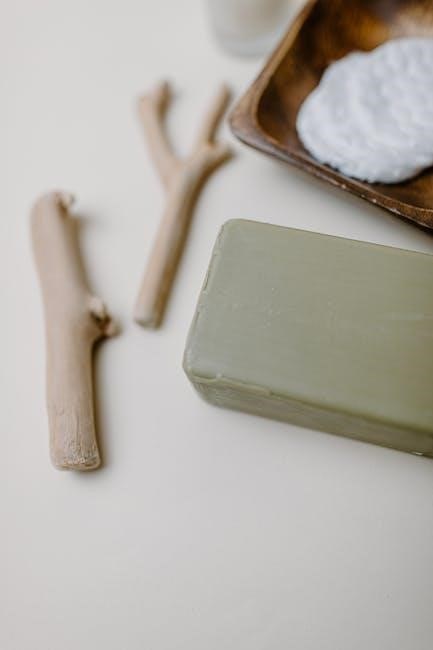Washing 100% cotton requires attention to detail to maintain softness and durability. Separate colors to prevent bleeding, check care labels for specific instructions, and use mild detergents. Avoid hot water to prevent shrinkage and refrain from over-drying to keep fabrics fresh and soft.
- Separate colored and white fabrics before washing.
- Choose gentle cycles and cold water for best results.
- Avoid using fabric softeners to maintain breathability.

Importance of Separating Colors Before Washing
Separating colors before washing is essential to prevent dye bleeding and fabric damage. Cotton fibers can release excess dye during the first few washes, especially in darker or brightly colored items. Mixing colored and white fabrics can lead to unsightly stains and discoloration. This is particularly true for new garments, as the dyes may not be fully set. By separating colors, you protect your clothes from unwanted dye transfer and maintain their vibrant appearance. Additionally, separating delicate or heavily soiled items ensures a more effective cleaning process without risking damage to lighter fabrics.

- Dark and light colors should be washed separately to avoid discoloration.
- Brightly colored or new cotton items should be washed alone initially.
- Delicate fabrics should be separated from heavier or coarser materials.
Proper separation ensures your cotton fabrics remain fresh, vibrant, and in excellent condition for years to come.
Checking the Care Label for Specific Instructions
Before washing your 100% cotton fabrics, always check the care label for specific instructions. The care label provides essential guidance tailored to the fabric type, dye, and weave of the garment. It may specify whether the item can be machine washed, hand washed, or requires dry cleaning. Some cotton fabrics may shrink or lose their shape if exposed to certain washing methods or temperatures. The care label will also indicate the recommended water temperature, cycle settings, and whether fabric softeners should be avoided. Ignoring these instructions can lead to damage, discoloration, or a shortened lifespan of the fabric.
- Look for symbols or text indicating machine washability and temperature settings.
- Pay attention to recommendations for gentle cycles or specific detergents.
- Be aware of any special treatments required for finishes or dyes.

By following the care label’s guidelines, you ensure the fabric remains in optimal condition and maintains its quality over time.
Choosing the Right Detergent for Cotton Fabrics
Selecting the appropriate detergent for washing 100% cotton fabrics is crucial to maintain their softness, breathability, and longevity. Opt for a mild detergent that is specifically designed for cotton or delicate fabrics. Avoid using harsh detergents or those containing bleach, as they can damage the fibers or cause discoloration. Fabric softeners should also be used sparingly, as they can leave a residue on cotton fabrics, reducing their natural softness and breathability over time.
- Choose a detergent free from harsh chemicals or optical brighteners.
- Consider eco-friendly or plant-based detergents for gentler cleaning.
- Look for detergents labeled as “safe for colors” to protect dyed cotton fabrics.
By using a suitable detergent, you can ensure your cotton fabrics remain soft, vibrant, and durable. Always test a small, inconspicuous area of the fabric before washing to confirm the detergent’s compatibility.
Recommended Washing Methods for 100 Cotton
When washing 100% cotton fabrics, it’s essential to use methods that preserve their softness and prevent damage. Machine washing is generally suitable, but opt for a gentle cycle with cold water to avoid shrinkage and wear. For delicate or heavily soiled items, hand washing is a safer option. Use a mild detergent and avoid scrubbing or twisting, as this can weaken the fibers.
- Use a gentle cycle with cold water to protect fibers.
- Hand wash delicate items in cold water with a mild detergent.
- Avoid using bleach or harsh chemicals that can damage cotton.
For machine washing, place cotton items in a mesh laundry bag to prevent snagging. Avoid overcrowding the washing machine, as this can cause friction and lead to pilling. If hand washing, gently agitate the water and rinse thoroughly to remove all soap residue. Proper washing methods ensure cotton remains soft, durable, and retains its natural texture.
Temperature Control to Prevent Shrinkage
Temperature control is crucial when washing 100% cotton to prevent shrinkage and maintain the fabric’s integrity. Cotton fibers naturally shrink when exposed to high heat, so it’s important to use cooler temperatures during both washing and drying. Washing cotton in cold water helps preserve its size and texture, while hot water can cause significant shrinkage, especially in newer garments.

- Always wash 100% cotton fabrics in cold water to minimize shrinkage.
- Avoid using hot water, as it can cause fibers to contract and lose their shape.
- If drying in a machine, use a low-heat setting or air-dry to prevent further shrinkage.
For delicate or oversized cotton items, hand washing in cold water is the safest method. When machine washing, ensure the water temperature is consistent throughout the cycle. High heat can also weaken the fabric over time, leading to a shorter lifespan. By maintaining cooler temperatures, you can enjoy your cotton garments for years while keeping them soft and comfortable.
Avoiding Over-Drying to Maintain Softness
Avoiding over-drying is essential to maintain the softness and comfort of 100% cotton fabrics. Over-drying can cause cotton fibers to become stiff, brittle, and prone to wear. To prevent this, remove cotton garments from the dryer while they are still slightly damp and allow them to air-dry. This method helps preserve the natural softness of the fabric and reduces shrinkage.
- Use a low-heat setting on your dryer or opt for air-drying to prevent over-drying.
- Remove cotton clothes from the dryer as soon as the cycle ends to avoid excessive heat exposure.
- Hang garments in a well-ventilated area to finish drying naturally, ensuring they remain soft and supple.
Over-drying can also lead to fading and a rough texture, which can make cotton fabrics less comfortable and less appealing. By monitoring the drying process and avoiding prolonged exposure to heat, you can keep your cotton clothes feeling fresh and soft for a longer period. Air-drying is particularly recommended for delicate or high-quality cotton items to maintain their original texture and appearance.
Tips for Hand Washing Delicate Cotton Items
Hand washing is the best method for cleaning delicate 100% cotton items to ensure they remain soft and intact. Fill a basin with cold water and add a small amount of mild detergent, avoiding harsh chemicals that can damage the fabric. Gently agitate the water to create a soft lather before submerging the cotton item. Let it soak for about 15 minutes to allow the detergent to penetrate the fibers without causing stress to the material.
- Use cold water to prevent shrinkage and color fading.
- Avoid scrubbing or wringing the fabric, as this can cause stretching or tears.
- Gently swish the garment around in the soapy water to distribute the detergent evenly.
After soaking, rinse the item thoroughly under cold running water to remove all soap residue. Lay the garment flat on a clean towel, reshaping it to its original dimensions. Avoid twisting or wringing, as this can stretch or damage the cotton fibers. Allow it to air-dry away from direct sunlight to preserve color and texture. Hand washing ensures delicate cotton items retain their softness and durability for years to come.
Proper Storage to Keep Cotton Fabrics Fresh
Proper storage is essential to maintain the freshness and quality of 100% cotton fabrics. To prevent moisture buildup and musty odors, store cotton items in a cool, dry place. Avoid using plastic bags, as they can trap humidity and cause mildew. Instead, opt for breathable containers or fabric bags made of natural materials like cotton or linen.
- Fold or hang cotton garments neatly to maintain their shape.
- Avoid overcrowding storage spaces, as this can cause creases or damage.
- Store clean, completely dry fabrics to prevent odors and mildew.
For long-term storage, consider using natural fiber bags or acid-free tissue paper to protect delicate cotton items. Avoid storing cotton in direct sunlight or extreme temperatures, as this can cause fading or shrinkage. Finally, refresh stored cotton fabrics periodically by airing them out in a well-ventilated area. Proper storage ensures your cotton items remain soft, fresh, and ready for use.